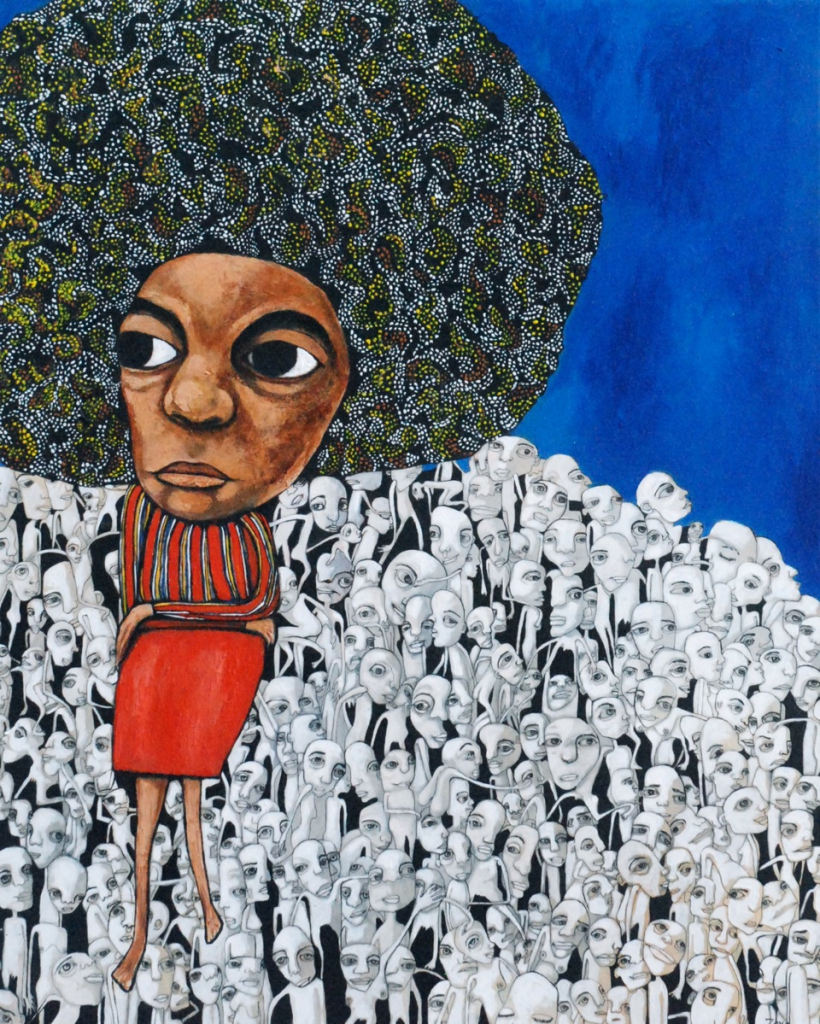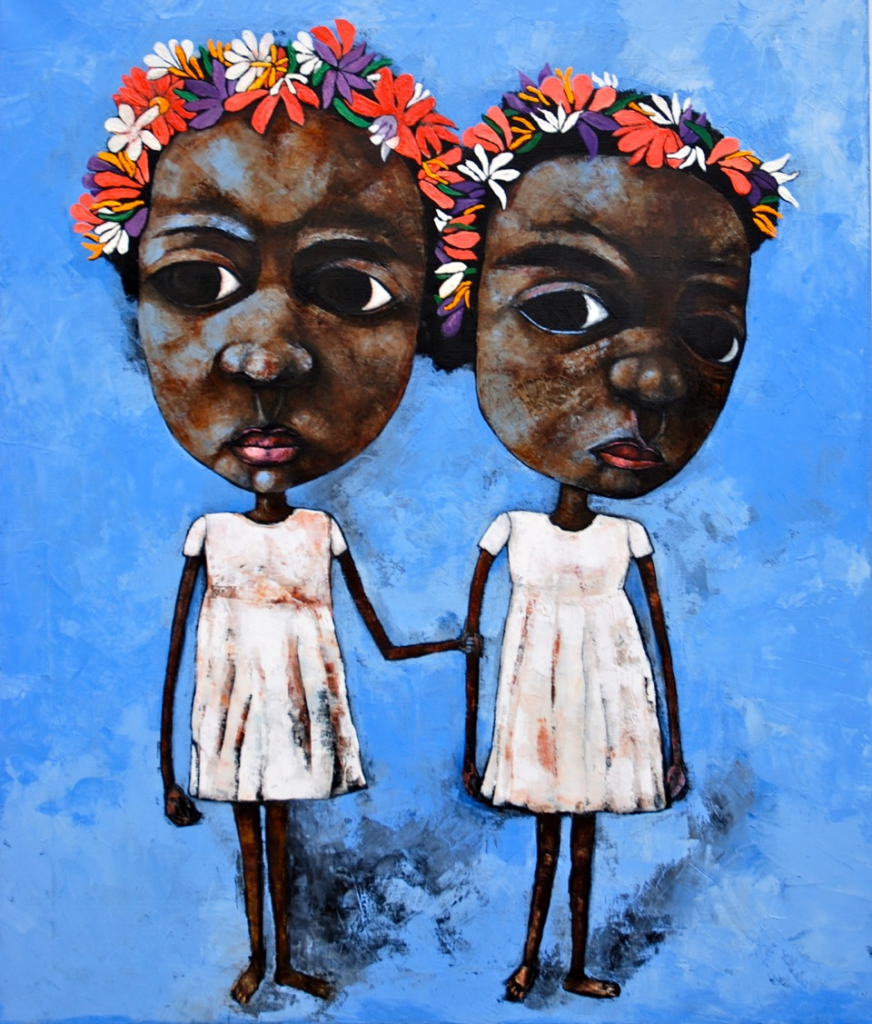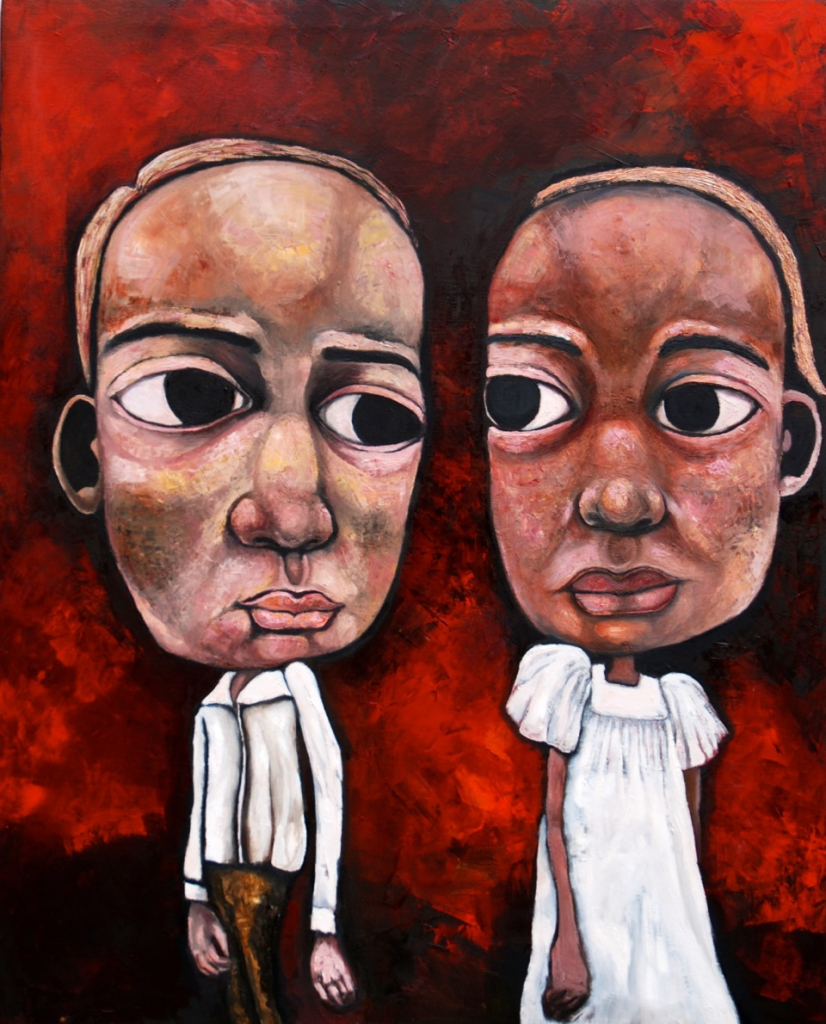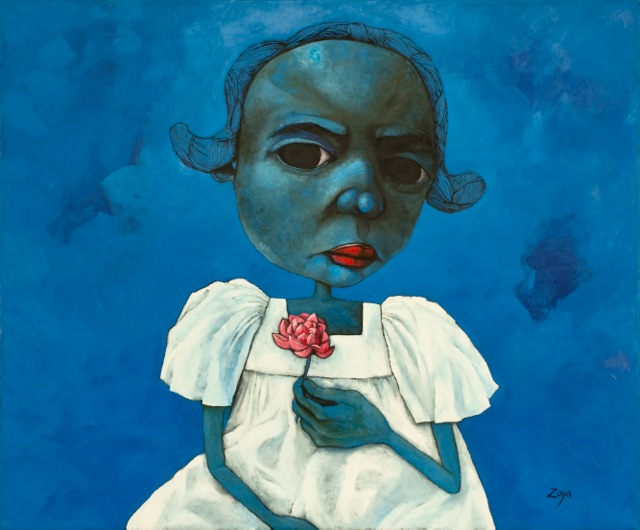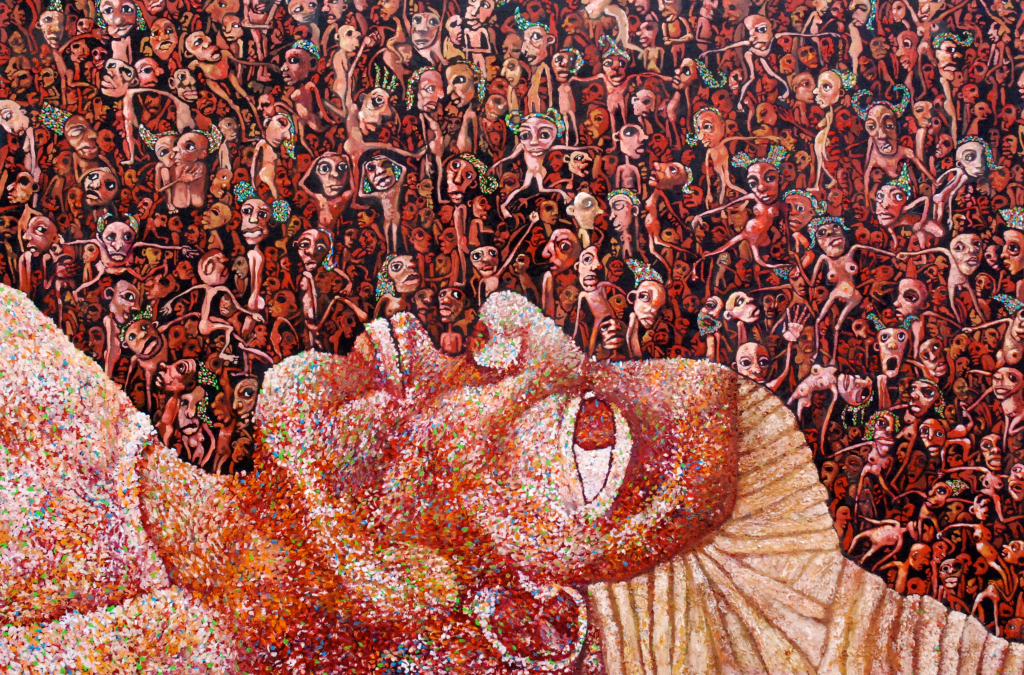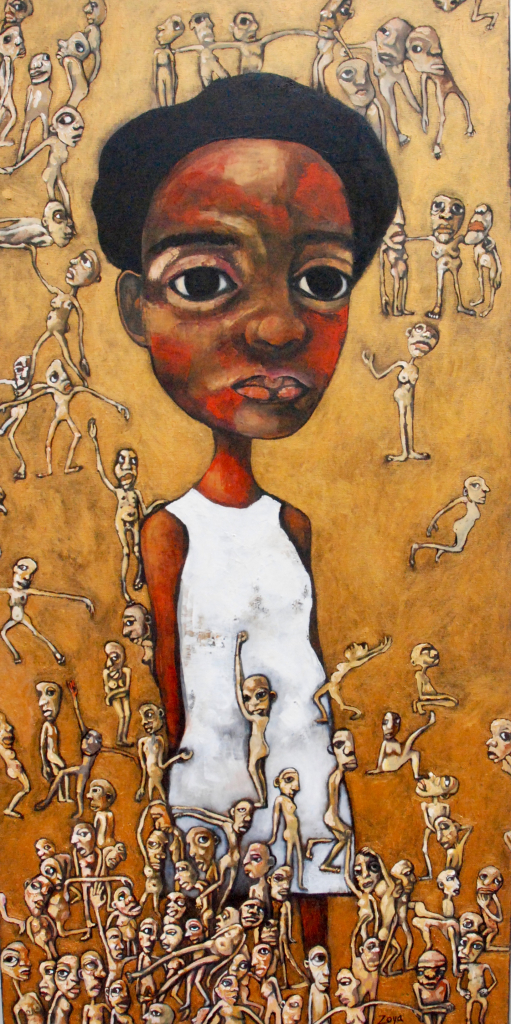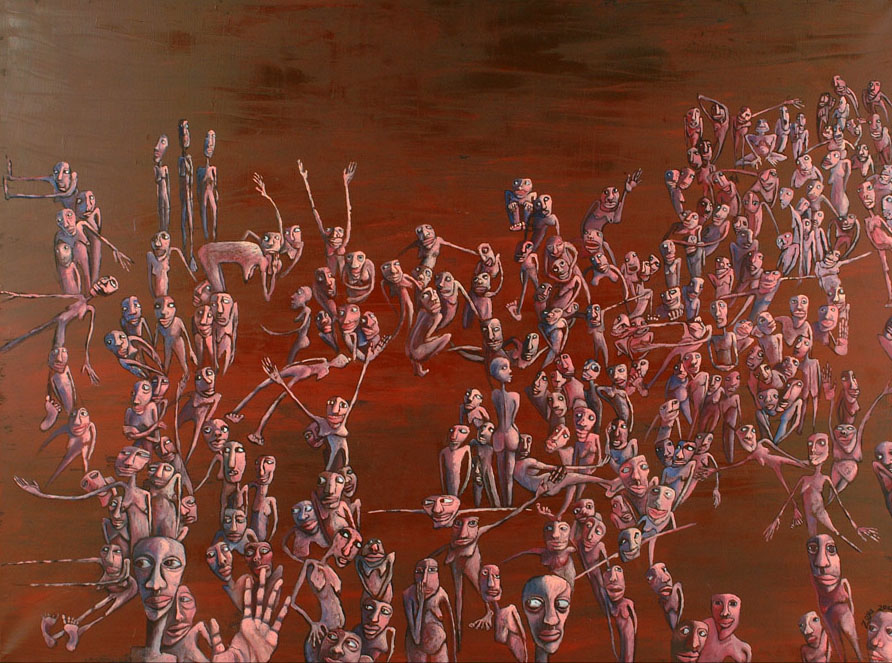Zoya Taylor is a Jamaican-Canadian self-taught artist living in Oslo, Norway. After years of teaching at universities, developing community programs and outreach facilities in Jamaica, Canada, Latvia, Bosnia Hercegovina and Norway. She began painting full-time in 2000 and has been doing so ever since. Her experiences growing up and as an adult, between different cultures, practices and languages, are a key source of inspiration for her paintings.

C – You said that you’re painting little characters, misfits, ” They are “immigrants” found between cultures, continents, languages and disciplines.” What is the message behind your art ?
Z – I think the term misfits can be interpreted as derogatory or pejorative. In fact, I had one person react really negatively on instagram to my hash-tagging my characters as misfits. She felt that I was in some way making a negative statement of characters who she perceived to be representing “blackness”.
Using the term misfits was in some way saying that they didnʼt belong. I see the point but I think it misses the point. It ignores the essential positivity of being a misfit. If you donʼt conform or fit in, yes, you are often judged and misunderstood by others, but it is this very thing that gives you a position of strength. You become stronger and more capable of making independent decisions. Misfits cannot be ignored. Granted not everyone wants this and some people are subjugated by this very fact -wanting to conform and not being given the opportunity to do so. But in my case I think the term misfits relates to my feeling of being in between. Never really belonging in one place or another but instead belonging in the “place of in between. This I believe, carries a strength of its own.
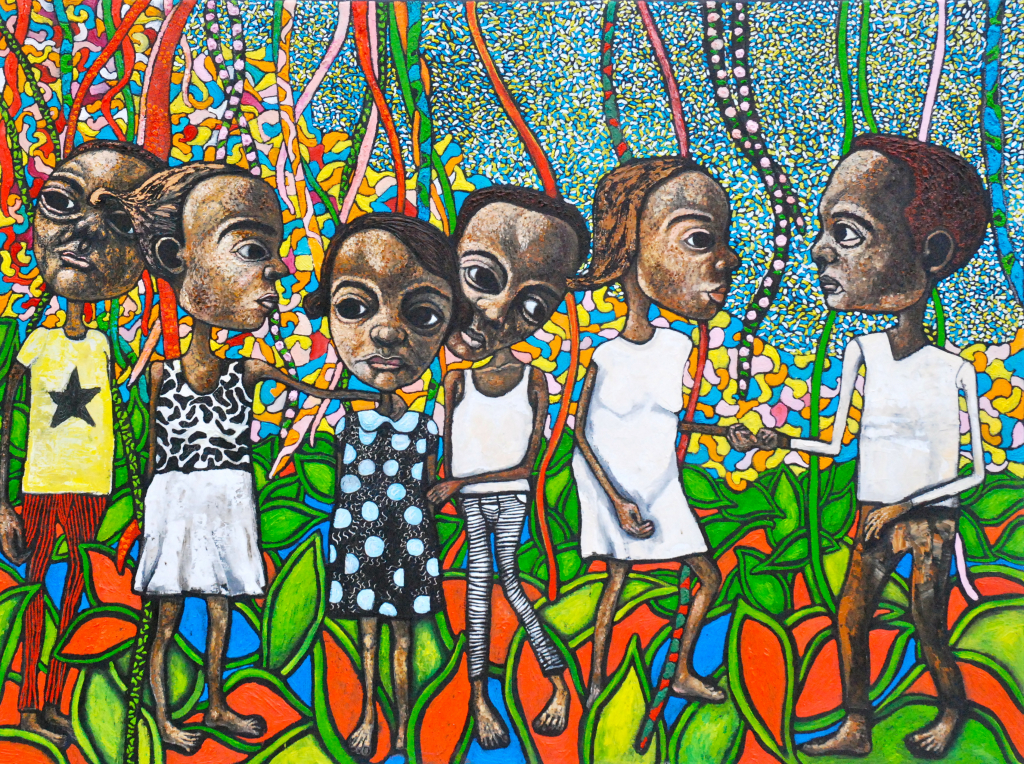
I think I have always been painting these characters in one form or another. They are my tribe. The memories and ghosts of our ancestors. The angels and demons; the shadow beings that we all carry with us. My painting universe began with my thin- skinned people. Vulnerable, yet fierce, searching and in transit.They are unique and yet anonymous. I would like the viewer to strip away the defences behind which adults have learned to hide, to see ourselves reflected in the works and the commonality beneath our apparent differences.
« I think I have always been painting these characters (…) The memories and ghosts of our ancestors.
C – You’ve been raised in Kingston, Jamaica. How does the Caribbean culture influence your artwork?
Z – It is difficult to say how Caribbean culture has influenced my work because I carry the Caribbean inside of me. There is no way I can see it as a separate entity from my identity but it is interesting to note the different the reactions to my art depending on the cultural context. I get very different reactions when I exhibit in Jamaica, compared to when I exhibit in Norway. The North American primarily Black response is also different.
In Jamaica the humour is picked up on almost immediately whereas here in Norway, the gaze of the characters in my paintings is more often seen as challenging or too vulnerable to be comfortable. At least, these are the reactions I hear. In the States where I perhaps have the biggest following and also the clearest classification as Black Art, the characters gaze is often referred to more politically in terms of pride and strength.
Itʼs a cliche but the gaze is everything. In Norway perhaps what hit most when I first arrived was the averted gaze. The fact that people very rarely meet your eyes. At least compared to what I was used to in Jamaica! Perhaps this directness of the Caribbean gaze is the most obvious influence in my work.
Growing up as I did in Germany as a small child, as part of mixed race family, then later Jamaica and then Canada and now here in Norway has definitely honed that fascination in the gaze. The different ways we are perceived and perceive others. In a way it has come full circle from being objectified as an oddity as a child in Germany to moving to Norway in the late 80ʼs and being an oddity here. From coming from a mixed race family to creating a band of misfits of their own. A blended family of Jamaican-Canadian, Norwegians scattered over three different continents and as different in terms of disposition, countenance and interests as you can imagine.
C – It seems like your bring different themes, and make the viewers question about : family, legacy, black empowerment, POC struggles… Tell us more about it
As a painter I share my personal narratives, my personal stories through paintings and in my case it’s ended up being about the outsider. The misfit if you will. But I think the older I have become the more I understand that being a so- called outsider is, for most of us, a natural state.
Some of us are more obviously outsiders simply by virtue of the way we look, what and who we identify as, and whatever other obvious difference presents itself in any given situation. I bring my own personal outsiderness to my paintings.
The result of growing up in various different cultures and also that of being visibly different in a predominantly white society. I also bring to my paintings a perceived otherness. The otherness that others define me as. An “othering which I myself donʼt really feel…canʼt really relate to. I donʼt want my “differentness” defined by anyone elseʼs standards.
I have often wondered at the number of times I have been asked how I feel to be the only black or brown person in the room. There are a lot of ways I can answer this but essentially I think my answer is that itʼs a problem with the room and not me.
I donʼt want my “differentness” defined by anyone elseʼs standards.
Whoever defines your so-called “otherness” has the power. I would like to think that I my outsiderness is defined by me. At least at stage of my life! I hope that we can all feel like we are misfits, in between, changing, redefining what think and see and acknowledging differences without judgement or fear.
In my work I try to explore the fluid boundaries between difference and sameness, a theme which I think the current pandemic lends a unique perspective. This pandemic has exposed our shared fragility.
But fragility is relative: we are all in the same situation and yet we are not. Our individual experiences depend on highly different political, economic, and social realities. We are suffering individually but we have set of circumstances that transcend the binary of differences and sameness and bring into focus the scope of experiences in-between. It is these experiences “in-between” that I try to capture in my art. What separates us also connects us.

Follow Zoya on her social media >
✽ Website
You like this article ? Just tell us in comment !
TAG :
#Caribeart #CaribbeanArtist #Caribbean #Caribe #Zoya #Taylor #ZoyaTaylor #Jamaica #Jamaican #JamaicanArt #Identity #Black #Female #Culture #People #Colors #Art #Artistes #Artist #Digital #Blog #Magazine #Mag #Webmag #New #English #Espanol


